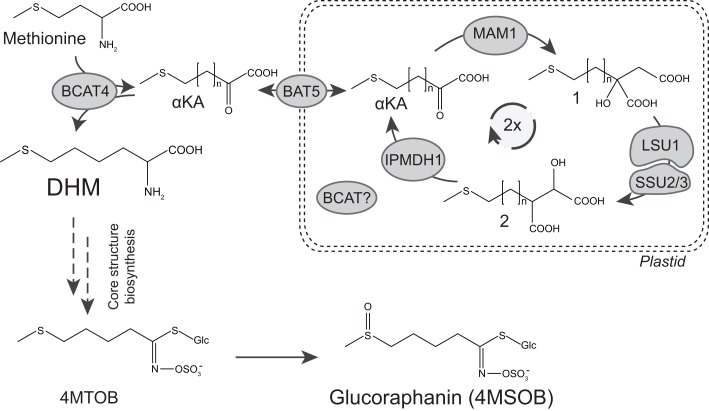Figure 1.
Biosynthetic pathway of dihomomethionine and glucoraphanin in Arabidopsis. Glucoraphanin biosynthesis consists of three steps: methionine conversion to dihomomethionine (DHM) by two cycles in the chain elongation machinery. Followed by DHM conversion into 4-methylthiobutyl glucosinolate (4MTOB) by the core structure pathway, and finally conversion of 4MTOB into 4-methylsulfinyl GLS (4MSOB), commonly known as glucoraphanin. Structures for intermediates of methionine chain elongation are depicted with DHM as the desired intermediate for the formation of glucoraphanin. αKA = α-keto acid, methylthio malate intermediates after condensation (1) and after isomerization (2). n = number of additional methylene groups in the methionine side chain as a result of the condensation reaction in the chain elongation cycle: n = 1 for methionine, n = 2 and n = 3 for intermediates from the first and second side-chain elongation cycle, respectively.

